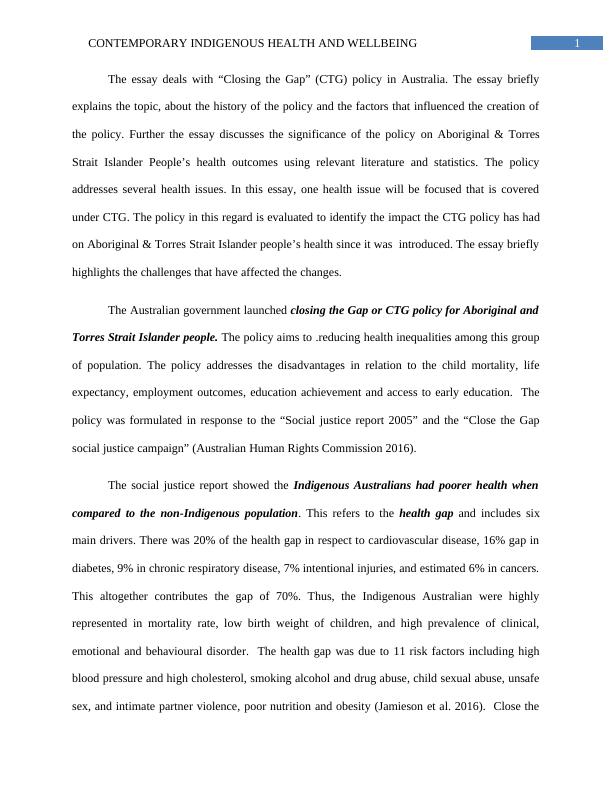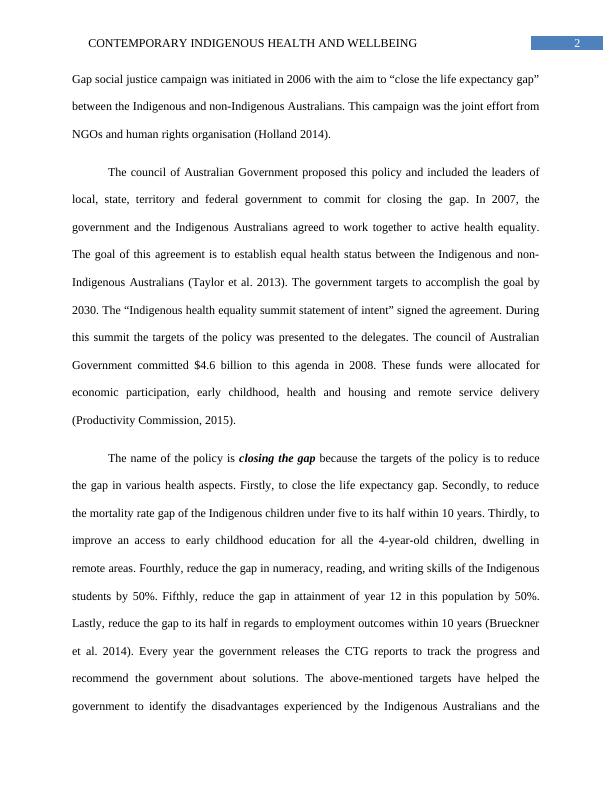Ask a question from expert
Contemporary Indigenous Health and Well-being | Essay
8 Pages2220 Words524 Views
Kenyatta University School of Economics
Introduction to Education (EDUCATION 100)
Added on 2020-03-07
About This Document
Contemporary Indigenous Health and Well-being | Essay
Kenyatta University School of Economics
Introduction to Education (EDUCATION 100)
Added on 2020-03-07
BookmarkShareRelated Documents
End of preview
Want to access all the pages? Upload your documents or become a member.
Contemporary Indigenous Health and Wellbeing
|8
|1998
|199
Contemporary Indigenous Health and Wellbeing
|10
|2616
|445
Contemporary Indigenous Health and Wellbeing| Report
|9
|2535
|30
Assignment on Indigenous People of Australia 2022
|7
|2116
|33
Contemporary Indigenous Health And Wellbeing Report 2022
|8
|2234
|15
Assignment about Closing The Gap (CTG)
|9
|2421
|23


